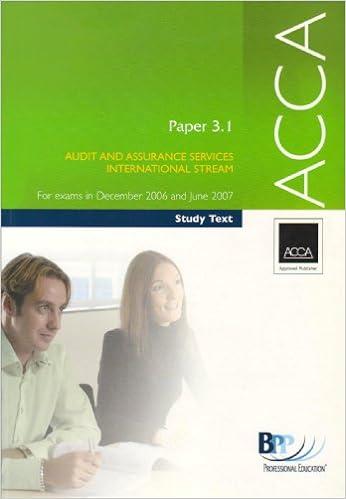Question
On January 1, 2010, Heyman invests $40,000 cash and inventory costing $15,000 but with a current appraised value of only $12,000. Mullins contributes a building
On January 1, 2010, Heyman invests $40,000 cash and inventory costing $15,000 but with a current appraised value of only $12,000. Mullins contributes a building with a $40,000 BV and $48,000 FV. The partnership also accepts responsibility for a $10,000 note payable owned in connection with the building. The partners agree to begin operations with equal capital balances. The articles of partnership also provide that each year-end, profits and losses are allocated as follows: 1. For managing the business, Heyman is credited with a bonus of 10% of partnership income after subtracting the bonus. No bonus is accrued if the partnership records a loss. 2. Both partners are entitled to interest equal to 10% of the average monthly capital balance for the year without regard for the income or drawings for that year. 3. An remaining profit or loss is divided 60% of Heyman and 40% to Mullins 4. Each partner is allowed to withdraw $800 per month in cash from the business. On October 1, 2010, Heyman invested an additional $12,000 cash in the business. For 2010, the partnership reported income of $33,000. Lewis, an employee, is allowed to join the partnership on Jan. 1, 2011. The new partner invests $66,000 directly into the business for a one-third interest in the partnership property. The revised partnership agreement still allows for both the bonus to Heyman and the 10% interest, but all remaining P/L are now split 40% each to Heyman and Lewis and 20% to Mullins. Lewis is also entitled to the $800 per month drawings. Mullins chooses to withdraw from the partnership a few years later. After negotiations, all partners agree that Mullins should be paid a $90,000 settlement. The capital balances at that time were as follows: Heyman, Capital $88,000 Mullins, Capital $78,000 Lewis, Capital $72,000 Required: (a) Assume that the partnership uses the BONUS method make all JE except for monthly drawings. (b) Assume that the partnership uses the GOODWILL method make JE except drawing
Step by Step Solution
There are 3 Steps involved in it
Step: 1

Get Instant Access to Expert-Tailored Solutions
See step-by-step solutions with expert insights and AI powered tools for academic success
Step: 2

Step: 3

Ace Your Homework with AI
Get the answers you need in no time with our AI-driven, step-by-step assistance
Get Started


